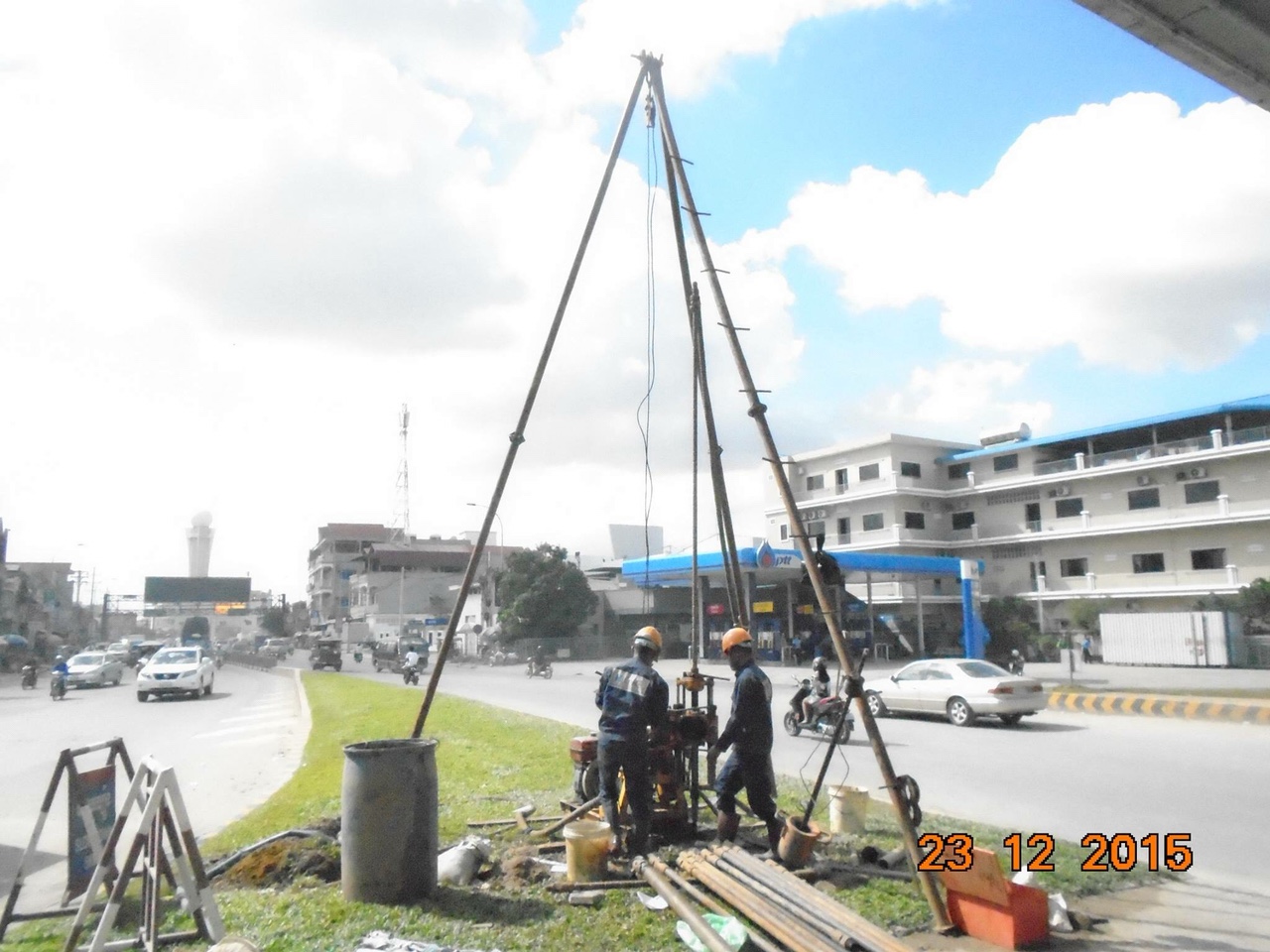Consolidation test (Cv)
Consolidation test (Cv)
Theory:
Consolidation of a saturated soil occurs due to expulsion of water under static, sustained load. The consolidation characteristics of soils are required to predict the magnitude and the rate of settlement. The following characteristics are obtained from the consolidation test.
Coefficient of compressibility,
![]()
Coefficient of volume change
![]()
Compression Index

Coefficient of consolidation
![]()
Equipment:
1. Consolidometer with a loading device
2. Specimen ring made of a non-corroding material
3. Water reservoir to saturate the sample
4. Porous stones
5. Soil trimming tools like fine wire saw, knife, spatula, etc
6. Dial gauge, accuracy 0.002mm
7. Water content cans
8. Large container
9. Steel ball
10. Weighing balance, accuracy 0.01 g.
11. Oven
12. Desiccator
13. Pressure pad
Procedure:
1. Clean and dry the metal ring. Measure its diameter and height. Take the mass of the empty ring.
2. Press the ring into the soil sample contained in a large container at the desired density and water content. The ring is to be pressed with hands.
3. Remove the soil around the ring. The soil specimen should project about 10mm on either side of the ring. Any voids in the specimen due to the removal of large size particles should be filled back by pressing the soil lightly.
4. Trim the specimen flush with the top and bottom of the ring.
5. Remove any soil particles sticking to the outside of the ring. Weigh the ring with the specimen.
6. Take a small quantity of the soil removed during trimming for the water content determination.
7. Saturate the porous stones by boiling them in distilled water for about 15min.
8. Assemble the Consolidometer. Place the bottom porous stone, bottom filter paper, specimen, top filter paper and the top porous stone, one by one.
9. Position the loading block centrally on the top porous stone. Mount the assembly on the loading frame. Centre it such that the load applied is axial. In the case of the lever loading system, counterbalance the system.
10. Set the dial gauge in position. Allow sufficient margin for the swelling of the soil.
11. Connect the mould assembly to the water reservoir having the water level at about the same as the soil specimen. Allow the water to flow into the specimen till it is fully saturated.
12. Take the initial reading of the dial gauge.
13. Apply an initial setting load to give a pressure of 5 ![]() (2.5
(2.5 ![]() for very soft soils) to the assembly so that there is no swelling. Allow the setting load to stand till there is no change in the dial gauge reading or for 24 hours.
for very soft soils) to the assembly so that there is no swelling. Allow the setting load to stand till there is no change in the dial gauge reading or for 24 hours.
14. Take the final gauge reading under the initial setting load.
15. Apply the first load increment to apply a pressure of 10 ![]() , and start the stop watch. Record the dial gauge readings at 0, 0.25, 1, 2.25, 4.0, 6.25, 9.0, 12.25, 16.00, 20.25, 25.00, 36, 49, 64, 81, 100, 121, 144, 169, 196, 225, 256, 289, 324, 361, 400, 500, 600, and 1440 minutes.
, and start the stop watch. Record the dial gauge readings at 0, 0.25, 1, 2.25, 4.0, 6.25, 9.0, 12.25, 16.00, 20.25, 25.00, 36, 49, 64, 81, 100, 121, 144, 169, 196, 225, 256, 289, 324, 361, 400, 500, 600, and 1440 minutes.
16. Increase the load to apply a pressure of 20 ![]() and repeat the step (15). Likewise increase the load to apply a pressure of 40, 80, 160, 320 and 640
and repeat the step (15). Likewise increase the load to apply a pressure of 40, 80, 160, 320 and 640 ![]() or upto the desired pressure.
or upto the desired pressure.
17. After the last load increment had been applied and the readings taken, decrease the load to 1/4 of the last load and allow it to stand for 24 hours. Take the dial gauge reading after 24 hours. Further reduce the load to 1/4 of the previous load and repeat the above procedure. Likewise, further reduce the load to 1/4 previous and repeat the procedure. Finally reduce the load to the initial setting load and keep it for 24 hours and take the final dial gauge reading.
18. Dismantle the assembly. Take out the ring with the specimen. Wipe out the excess surface water using a blotting paper.
19. Take the mass of the ring with the specimen.
20. Dry the specimen in the oven for 24 hours and determine the dry mass of specimen.



Fig: Consolidation Test of Soil





















